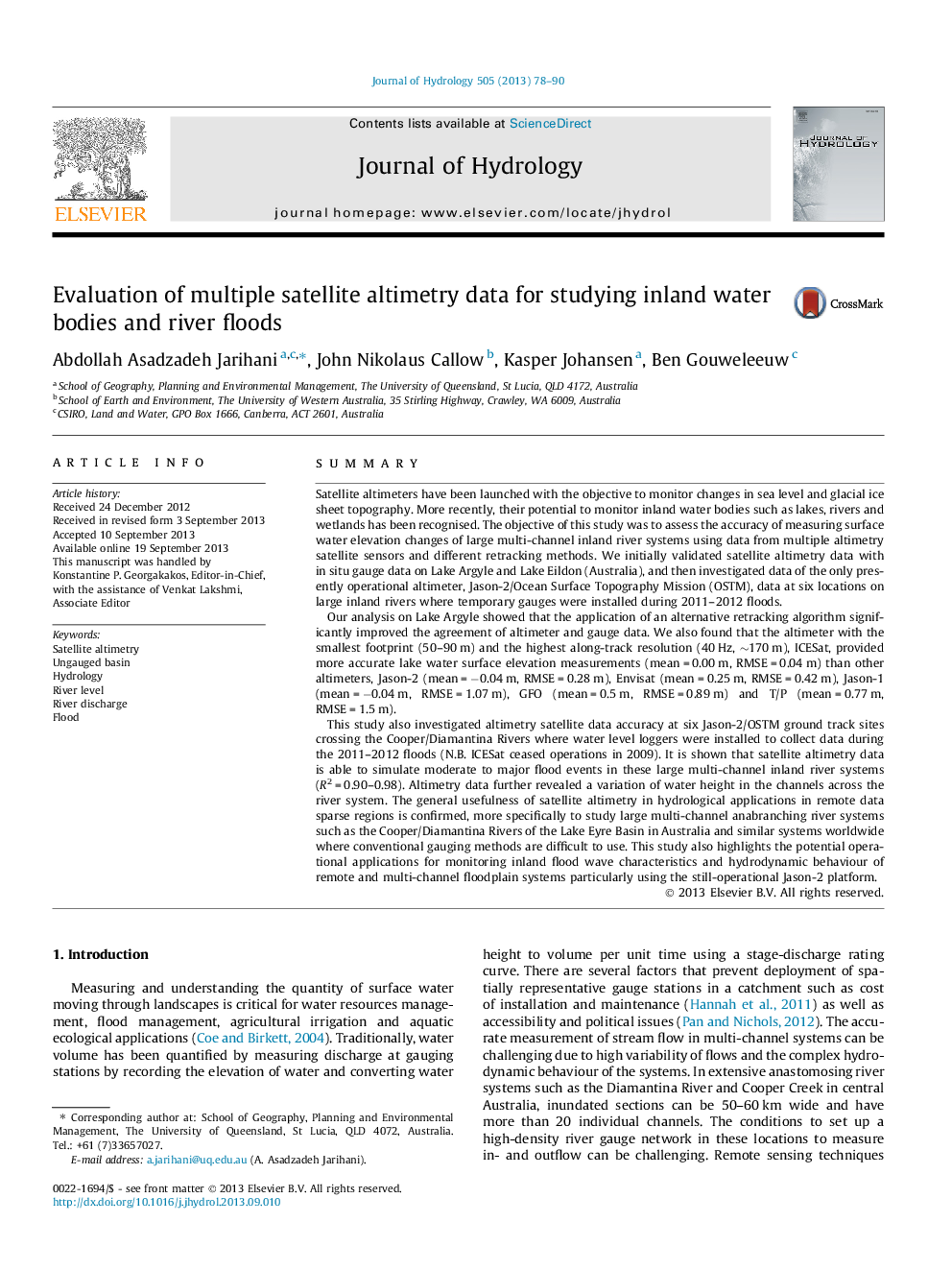| Article ID | Journal | Published Year | Pages | File Type |
|---|---|---|---|---|
| 4576151 | Journal of Hydrology | 2013 | 13 Pages |
•Satellite altimetry allows the study of ungauged basin hydrology.•Some altimetry satellites provide sub-decimetre accuracy for floods >1 km wide.•Newer generation platforms and dedicated terrestrial algorithms are more accurate.•Jason-2 offers a superior product for ongoing research.•Potential to use both legacy and ongoing near-real-time data for new applications.
SummarySatellite altimeters have been launched with the objective to monitor changes in sea level and glacial ice sheet topography. More recently, their potential to monitor inland water bodies such as lakes, rivers and wetlands has been recognised. The objective of this study was to assess the accuracy of measuring surface water elevation changes of large multi-channel inland river systems using data from multiple altimetry satellite sensors and different retracking methods. We initially validated satellite altimetry data with in situ gauge data on Lake Argyle and Lake Eildon (Australia), and then investigated data of the only presently operational altimeter, Jason-2/Ocean Surface Topography Mission (OSTM), data at six locations on large inland rivers where temporary gauges were installed during 2011–2012 floods.Our analysis on Lake Argyle showed that the application of an alternative retracking algorithm significantly improved the agreement of altimeter and gauge data. We also found that the altimeter with the smallest footprint (50–90 m) and the highest along-track resolution (40 Hz, ∼170 m), ICESat, provided more accurate lake water surface elevation measurements (mean = 0.00 m, RMSE = 0.04 m) than other altimeters, Jason-2 (mean = −0.04 m, RMSE = 0.28 m), Envisat (mean = 0.25 m, RMSE = 0.42 m), Jason-1 (mean = −0.04 m, RMSE = 1.07 m), GFO (mean = 0.5 m, RMSE = 0.89 m) and T/P (mean = 0.77 m, RMSE = 1.5 m).This study also investigated altimetry satellite data accuracy at six Jason-2/OSTM ground track sites crossing the Cooper/Diamantina Rivers where water level loggers were installed to collect data during the 2011–2012 floods (N.B. ICESat ceased operations in 2009). It is shown that satellite altimetry data is able to simulate moderate to major flood events in these large multi-channel inland river systems (R2 = 0.90–0.98). Altimetry data further revealed a variation of water height in the channels across the river system. The general usefulness of satellite altimetry in hydrological applications in remote data sparse regions is confirmed, more specifically to study large multi-channel anabranching river systems such as the Cooper/Diamantina Rivers of the Lake Eyre Basin in Australia and similar systems worldwide where conventional gauging methods are difficult to use. This study also highlights the potential operational applications for monitoring inland flood wave characteristics and hydrodynamic behaviour of remote and multi-channel floodplain systems particularly using the still-operational Jason-2 platform.
